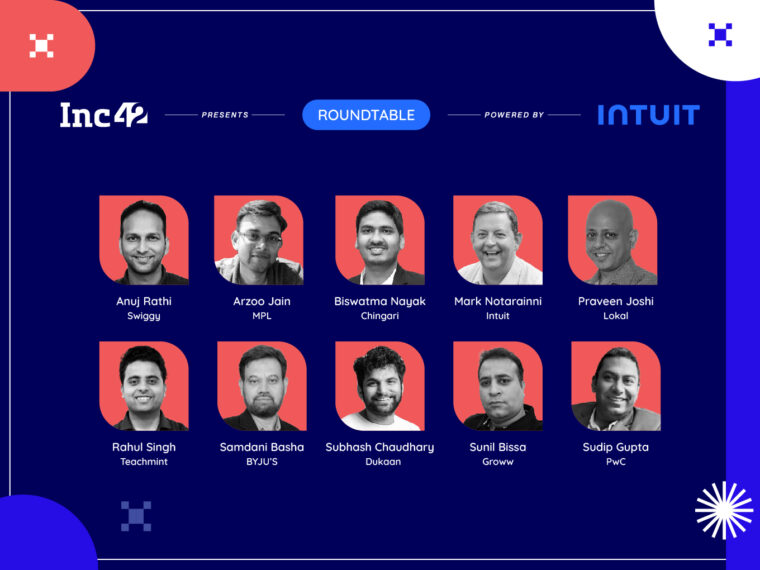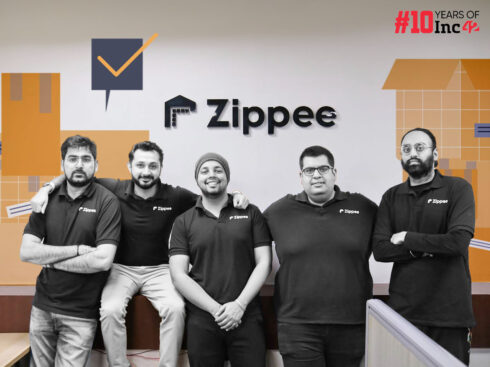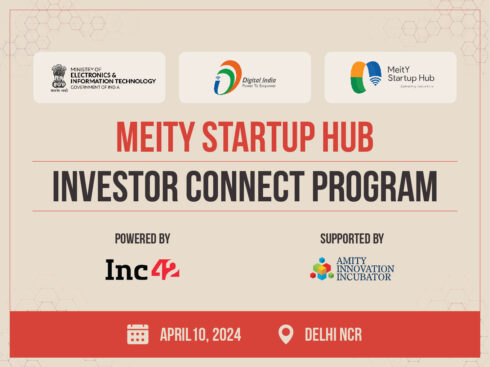
SUMMARY
A survey reveals at least 60% of customers prefer to wait in a queue for human assistance, while about 40% are willing to talk to a chatbot first
Inc42 and Intuit recently held a round-table discussion in Bengaluru to discuss how businesses can blend technology automation and human assistance to deliver the best possible outcomes
Industry leaders from various sectors across edtech, foodtech and gaming took part in the discussion
Unless you’ve been living under a rock, most people are fully aware of the souped-up AI chatbot that has gone viral across virtually every industry segment that has anything to do with human intelligence. ChatGPT is the latest iteration of generative AI from the tech stack of OpenAI (a San Francisco-based research laboratory). With its earlier large language model (LLM), now fine-tuned with extensive human-guided training now incorporated into its datasets, ChatGPT is fully ready for just about any knowledge-driven exercise.
ChatGPT is estimated to have gained 1 Mn users in a week since its launch in November 2022, becoming the quickest application to touch the milestone. Since then, the AI tool has been used to draft blogs/articles, compose essays, find responses to queries and churn out creative ideas like an unstoppable genius.
Its impact has been so profound that Italy has immediately banned the advanced AI model citing privacy concerns, and tech behemoth IBM has said it will hire fewer people in the next five years. Out of its 26K back-office jobs, nearly one-third (7.8K) can be replaced by AI bots, according to IBM CEO Arvind Krishna.
Although ChatGPT has successfully outlined what generative AI can accomplish in a short span of time, the critical question remains. Can AI bots ensure contextual problem-solving in the same way humans do? This is especially important when businesses handle customer-facing functions. While AI/ML-based bots can help with personalised recommendations and drive sales and marketing to some extent, it falls short of creating the human-like connections desired by most customers.
A survey by Germany-based live chat software Userlike revealed that at least 60% of customers would prefer to wait in a queue if they could speak to a human agent immediately, although more than 40% were willing to interact with a chatbot first.
A key element in delivering excellent service is empathy and understanding what customers expect when doing business with a company. And as more and more businesses adopt cutting-edge technologies to automate the experiences they provide their customers, it’s important that they recognise when human intervention is required to deliver the best possible outcome.
To decode how startups in India can strike the perfect balance between automation and human involvement, Inc42 and Intuit, a global financial technology platform company, recently held a round-table discussion in Bengaluru on Redefining Customer Service: Role Of AI/ML & New Age Tech In Enhancing Customer Experience.
Moderated by Sudip Gupta, director (experience consulting) at PwC, the conference saw the participation of industry leaders from various sectors such as edtech, fintech, gaming and foodtech. Here is a quick look at the most noted people who took part in the discussion:
- Mark Notarainni, EVP & chief customer success officer, Intuit
- Anuj Rathi, SVP (revenue and growth), Swiggy
- Arzoo Jain, AVP (product, games & development platform), MPL
- Biswatma Nayak, cofounder & CTO, Chingari
- Praveen Joshi, VP (engineering), Lokal
- Rahul Singh, senior director (product management), Teachmint
- Samdani Basha, SVP (experience), BYJU’S
- Subhash Chaudhary, cofounder & CTO, Dukaan
- Sunil Bissa, VP (India), Groww
Finding The Sweet Spot
As many startups find it challenging to strike the perfect balance between automation and ‘humanisation,’ moderator Sudip Gupta from PwC asked the edtech players how they are delivering a well-rounded customer experience.
Basha from BYJU’S said that the use of AI/ML tools for personalisation covers a broad spectrum of use cases and different strategies work for different platforms, depending on the intended goal.
For instance, the edtech’s self-paced learning modules require no (human) mentoring, representing one extreme of the personalisation spectrum. On the other hand, creating content or developing a curriculum does require human expertise.
“Of course, there are tools to facilitate content creation. But I would say it is 90% human intervention,” he said.
According to Basha, knowledge experts like tutors and mentors at BYJU’S convert concepts into bite-sized videos and continuously monitor student reception and retention of the same.
Rahul Singh from Teachmint had a fair idea of why the human component worked well in many edtech use cases. “Schools are, by nature, risk-averse businesses. They need to be convinced that they are picking the right product. Therefore, a lot of sales happen based on trust and relationships, achieved only through human interactions.”
Therefore, the startup’s ground operations team visits schools in person for sales, onboarding and support.
Swiggy’s Anuj Rathi revealed how the foodtech unicorn employed AI/ML tools to track and analyse changing consumer trends before venturing into quick commerce. It used the existing tech stack to build a minimum viable product for an on-demand grocery delivery platform (Instamart). When the new module worked, Swiggy scaled up the business.
Again, some startups like the B2B retail tech platform Dukaan run their support system without human components.
“Right when we started, we knew it would be impossible to directly tend to lakhs of customers everyday. So, we decided not to have a customer support system,” said Subhash Chowdhary, Dukaan’s cofounder and CTO.
Instead, he posted a number on the site and the app to collect customer feedback. The calls came, and he modified Dukaan’s offerings accordingly.
Why ‘Humans’ Are At A Premium In Tier 2 & 3 Markets
High-speed internet and affordable smartphones have brought digitalisation to people from Tier 2 cities and beyond. And given the growing demand for digital commerce in non-metros and rural India, industry experts believe these untapped regions will be the next growth frontiers for Indian startups. Therefore, it is crucial to promote digital literacy among this newly incorporated consumer base and find their tech comfort zone through meaningful communication, not exactly a bot’s strong point.
According to Praveen Joshi of hyperlocal news startup Lokal, the ‘real’ India is there, in the regions beyond the metropolitans. And these users from ‘Bharat’ still prefer human interactions to get their queries resolved.
For instance, Lokal has an operations team in smaller towns like Khammam in Telangana to help small players like local schools display their admission ads on the hyperlocal app.
Although many of these schools have the technology to post their ads online, they prefer to call customer support for ad placements. The Lokal team also calls to remind them to reinstate their ad cycles.
Sunil Bissa of Groww agreed with Joshi.
“Customers in Delhi and Mumbai can access financial services like investment tech. However, customers from smaller towns in Uttar Pradesh may have the intention to invest but have no access to such services. Keeping these pain points in mind, our design philosophy for the website is simple, and we have human support whenever needed.”
How Startups Are Catering To Digital-First Consumers
“Gen Z has grown up in the age of technology, with gadgets. So, they have high expectations from basic activities like scrolling and sharing. It is imperative to provide them with a best-in-class experience around that,” said Arzoo Jain of MPL.
The gaming unicorn also noticed a significant difference between the Zoomers and the rest (Gen Alpha is not included here). For example, the desire for instant gratification among Gen Z is higher than others.
Jain said that Zoomers do not give enough time to explore a product, if it works for them in the first or second instance, they will continue using it. If not, then they will move on to another website to test a different product.
Biswatma Nayak, the cofounder and CTO of the reward-based short-video platform Chingari, thinks transparency is crucial for Gen Z.
Incidentally, 70% of Chingari users are Zoomers who prefer to use the platform due to its transparency. Nayak said that a lot of reward-based platforms don’t disclose the virtual earnings of their users on their platforms but Chingari does. “Whatever reward is given on Chingari app to users and video content creators is visible to all. We have a leadership board in the app that shows the list of earners and their earnings and this is why the Zoomers trust our app,” said Nayak.
Chingari incentivises its users and video content creators with its virtual currency called GARI token to watch and create videos to drive engagement.
Prioritising Data Security
Intuit’s Mark Notarainni believes that the quickest way to lose customers’ trust is by allowing a breach that endangers their data security. In describing tactics often used by fraudsters, Notarainni said, “Social engineering (retrieving personal information by deception) is plaguing the internet. Fraudsters collect customer data by pretending to represent a company that the customer knows already has access to their data.”
This scenario is causing concern. “As technologies continue to quickly evolve and the cost to purchase those technologies continues to drop, fraud rings are getting more sophisticated, so businesses have to stay ahead of them,” he said.
No single AI tool, no matter how “scary good” it is (according to Elon Musk), can guarantee business success or customer satisfaction. The key to ensuring a seamless, safe and confident customer experience is for businesses to embrace a holistic view of how they use AI-driven and automation technologies to augment the outcomes they deliver; bringing them together with robust security measures, and the empathy, understanding and expertise that only human intervention can provide.

























